Monday Morning Update 6/6/16
Top News

Rumors surface – again – that McKesson is considering selling or merging its McKesson Technology Solutions business unit in the face of drug pricing pressures. (As MCK Auto Pilot commented in March, laid off McKesson employees were already pontificating upon the likelihood of a near-term sell-off.) The Atlanta-based company cut 1,600 jobs – nearly 4 percent of its US workforce – that same month in an effort to cut costs after losing key pharma customers. MTS had $2.9 billion in sales in the last fiscal year, and an operating profit of $519 million. McKesson’s drug business had $188 billion in sales in the fiscal year and a profit of $3.6 billion.
HIStalk Announcements and Requests

Welcome to new HIStalk Platinum Sponsor Meditech. The Westwood, MA-based company basically created the healthcare IT industry in the 1960s and continues to provide its customers with "One Patient, One Record, One Bill, One Portal" systems at a sustainable cost. Clinicians designed the company’s shared, mobile, patient-centered Web EHR to deliver usability, with just-in-time relevant information displayed on easy-to-use personalized screens and a fast-track implementation plan that accelerates the time to value. Meditech is used by 250,000 doctors who are safely and effectively treating 100 million patients across all care settings with 100 percent utilization and high levels of productivity, paying attention to their patients rather than to their EHR. Meditech-using health systems have earned awards such as HIMSS EMRAM Stage 7, Magnet, Davies, Baldrige, and various "top hospitals" lists. Thanks to Meditech for supporting HIStalk.
Webinars
June 28 (Tuesday) 2:00 ET. “Your Call Is Very Important.” Sponsored by West Healthcare Practice. Presenters: Cyndy Orrys, contact center director, Henry Ford Health System; Brian Cooper, SVP, West Interactive. The contact center is a key hub of patient engagement and a strategic lever for driving competitive advantage. Cyndy will share how her organization’s call center is using technologies and approaches that create effortless patient experiences in connecting them to the right information or resource. Brian will describe five key characteristics of a modern call center and suggest how to get started.
Contact Lorre for webinar services. Past webinars are on our HIStalk webinars YouTube channel.
Last Week’s Most Interesting News
- Billionaire Patrick Soon-Shiong, MD takes NantHealth public in a $91 million offering.
- A federal appeals court rules against Epic, deciding that companies cannot force their employees to sign arbitration agreements that prevent them from filing lawsuits against their employer.
- ONC reports that 84 percent of US hospitals had adopted a basic EHR by 2015, up from just 9.4 percent in 2008.
- Forbes lowers its estimate of Theranos founder Elizabeth Holmes’ net worth to zero, down from $4.5 billion.
- The Washington Redskins confirms that the medical records of thousands of NFL players have been compromised after a laptop belonging to one of the team’s trainers was stolen in April.
Acquisitions, Funding, Business, and Stock

TrueVation sells the Canadian rights to PatientPrep to Canadian EHR vendor QHR for $500,000. TrueVation, which has headquarters in the US and Canada, will continue to own and market the patient onboarding software in the US.
Fortune contributor Dan Primack challenges the magazine’s revised estimate of the net worth of Theranos founder Elizabeth Holmes (from $4.5 billion to $0), pointing out that its original estimate was way off the mark. “Like other founders of privately-held startups,” he says, “Holmes did not hold any liquid securities in her company. It’s possible that she sold some shares along the way ― as small secondary transactions alongside broader company fundraises ― to pay the mortgage or buy a car (even a nice car), but the vast majority of her holdings had little more than theoretical value. Elizabeth Holmes has plenty to worry about. Losing $4.5 billion that she never really had shouldn’t be one of them.”
Announcements and Implementations

Glendora Community Hospital (CA) implements an e-forms solution from Access in its ER and admissions departments.

Validic adds Finland-based Polar wearables to its digital health ecosystem of devices, wearables, and apps for corporate wellness programs and remote monitoring programs.
Intermountain Healthcare (UT), Providence Health & Services (WA), Stanford Cancer Institute (CA), and precision medicine software company Syapse form the Oncology Precision Network to share aggregated cancer genomics data and increase access to clinical trials, particularly for patients in underserved communities.
Cloud solutions and health IT consulting firm CloudWave (fka Park Place International) partners with Commvault to offer Meditech users data backup, archiving, and disaster recovery solutions.

St. Luke’s Hospital (MN) implements SIS perioperative IT solutions to complement its Meditech EHR.
RCM vendor Rev-Ignition will offer its clients paperless billing solutions from PatientPay.
People

Joel Sangerman (Option Care) joins Zillion Health as vice president of sales, managed markets. (You can read my May 2016 interview with Zillion President Bill Van Wyck here.)

Jennifer Dangar (The Weather Company) joins Jackson Healthcare in the new role of chief of corporate operations.
Technology
Rennova Health adds electronic medication management software to its Medical Mime M2Select EHR for substance abuse treatment and behavioral health providers.

Baltimore-based ICmed develops software to help families coordinate, document, and share health data and care plans.
Privacy and Security

ProMedica Bixby and Herrick hospitals (MI) alert 3,500 patients that their medical records were inappropriately accessed by seven employees – three of whom have been fired. The hospitals have launched an internal investigation into the breach and implemented an auditing program that includes EHR monitoring tools.
Other

The universe nearly implodes when Apple’s App store and several other services including ITunes goes down for seven hours on Friday. The company offered no explanation for the outage, leading several message boards to proclaim it had been hacked.
Sponsor Updates
- First DataBank publishes FDB MedKnowledge Canada in Canadian French.
- PatientMatters will exhibit at the Illinois Hospital Association Small & Rural Hospitals Annual Meeting June 8-9 in Springfield, IL.
- Streamline Health and T-System will exhibit at the 2016 CHIA Convention & Exhibit June 5-8 in Long Beach, CA.
- The local paper profiles the expansion of TierPoint’s data center in Milwaukee.
- Valence Health will exhibit at the National Bundled Payment Summit June 7-9 in Washington, DC.
- VitalWare publishes a client success story featuring a Chicago-based health system.
- Wellsoft will exhibit at the NAFEC Annual Conference June 6-8 in Houston.
- ZeOmega posts a new video, “The Future of Population Health Management and Value-based Care: The ZeOmega Perspective.”
Blog Posts
- What your CIOs and CEOs learned at our IT Executive Summit (The Advisory Board Company)
- Why Healthcare Providers Should Request Payment Upfront (Patientco)
- Memorial Sloan Kettering’s Charge Capture Success Story (PatientKeeper)
- Improving collaboration and patient care through a single patient identifier (PerfectServe)
- ONC seeks alignment of incentives around free flow of health information (Lexmark)
- Watson and his AI Cousins will Always Need Humans: Is the Converse True? (PeriGen)
- Providing Value while Building the Client Relationship (Phynd Technologies)
- Progress Notes in PMD: Fast, Efficient, Fun (PMD)
- Surescripts at the ONC Annual Meeting: Combatting the Opioid Abuse with Health IT (Surescripts)
- 25 Years, 100 Transfer Centers, 4 Lessons (TeleTracking)
- For Providers, Successful Accountable Care can Start with Employees (Verisk Health)
- Satisfaction isn’t enough. (Voalte)
- The Pharmacist as Provider: Retail Meets the Clinical (West Corp.)
- How can Healthcare Achieve Value-based Care? (Xerox)
- Reducing the Stress of HDHPs and Patient Collections (ZirMed)
- Interoperability and Toppling the Tower of Babel (Aprima)
Contacts
Mr. H, Lorre, Jennifer, Dr. Jayne, Lt. Dan.
More news: HIStalk Practice, HIStalk Connect.
Get HIStalk updates.
Send news or rumors.
Contact us.
























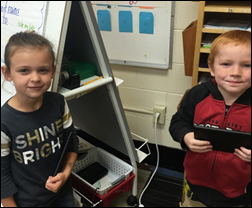

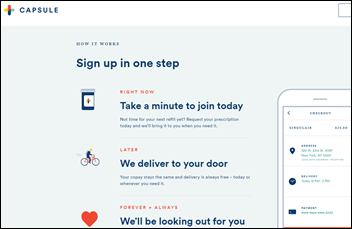









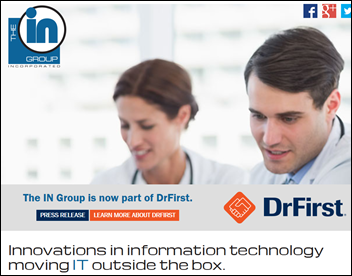
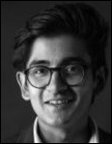

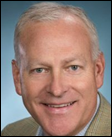
























































































































The primary point of using the Cloud is using operating expenses vs limited capital ones and avoiding having to update…